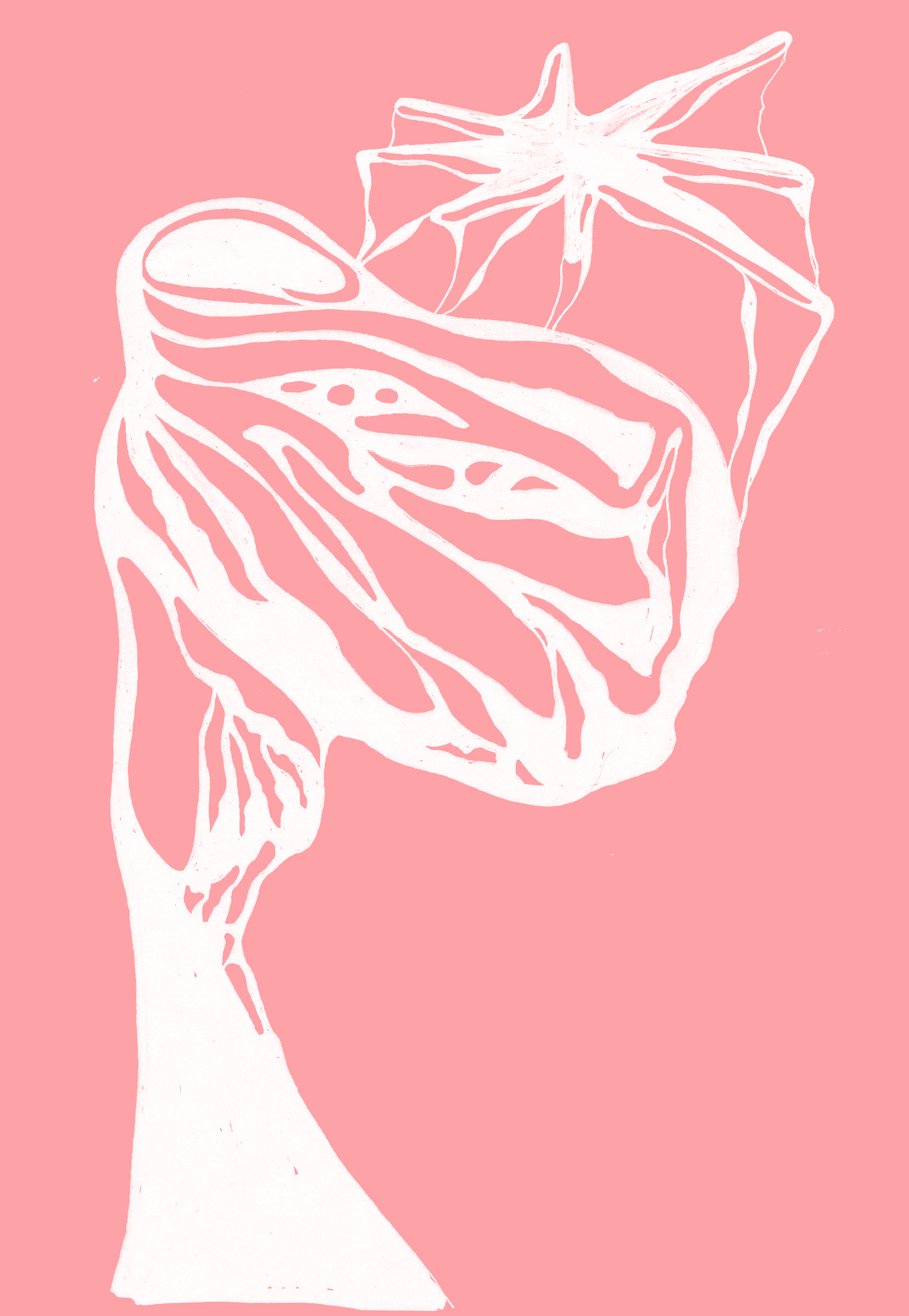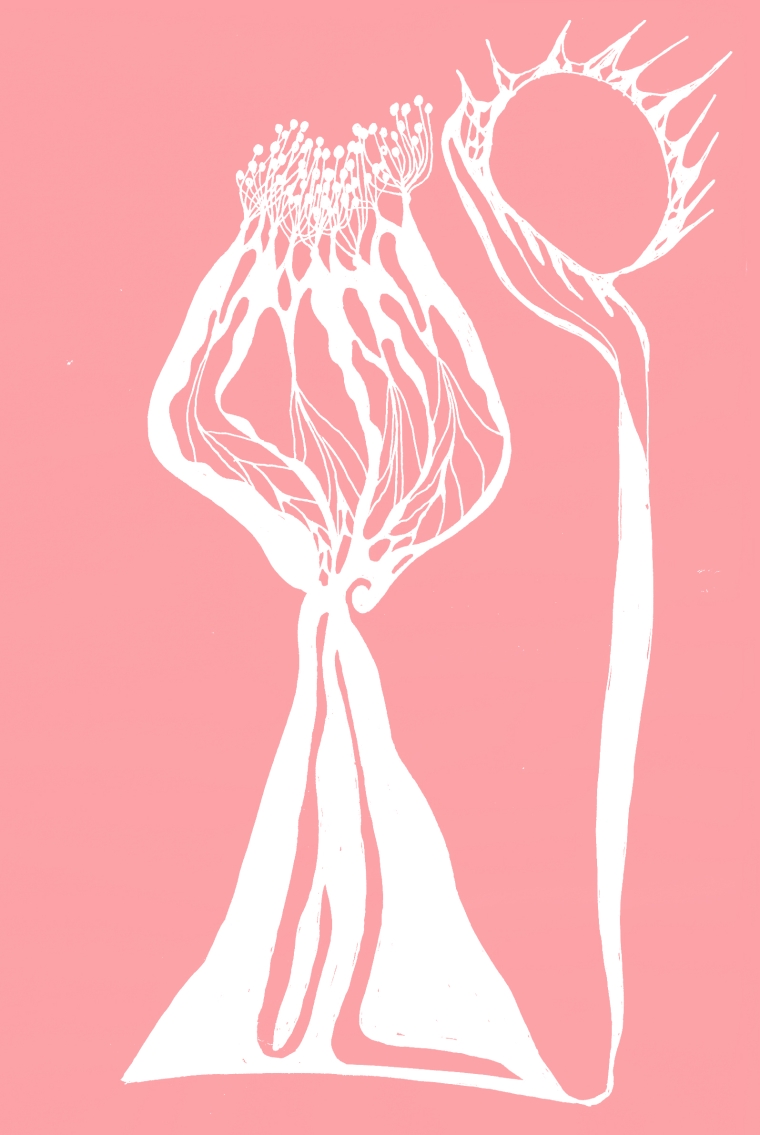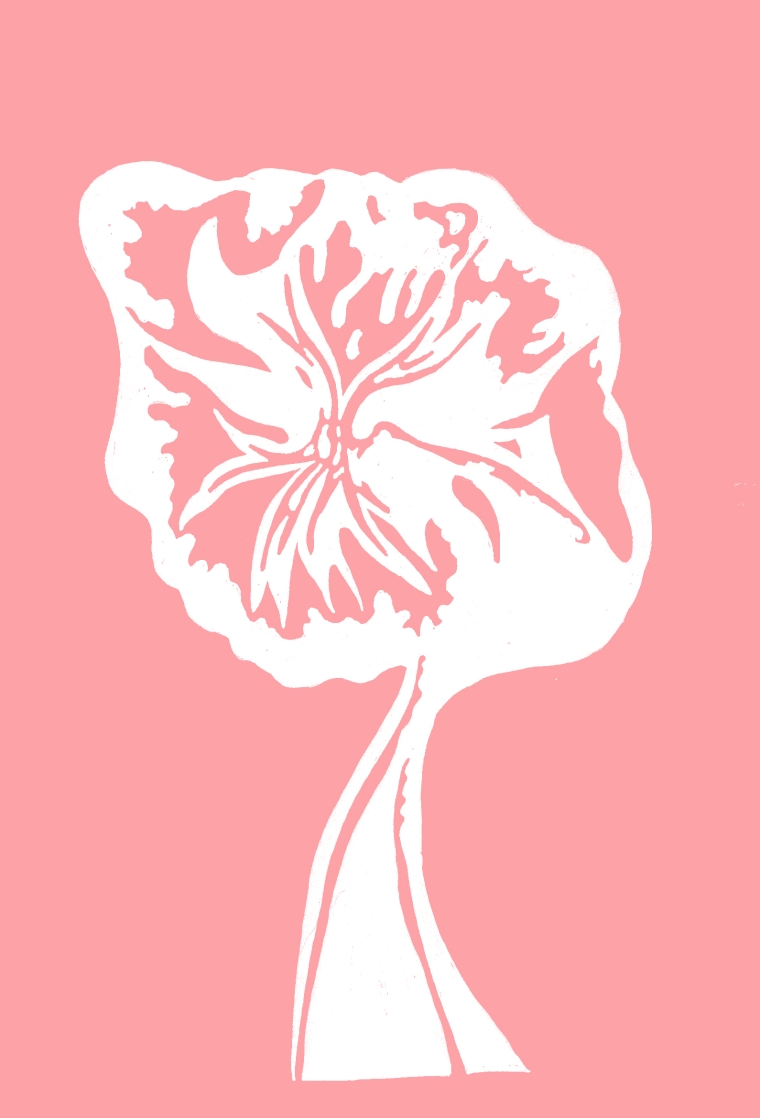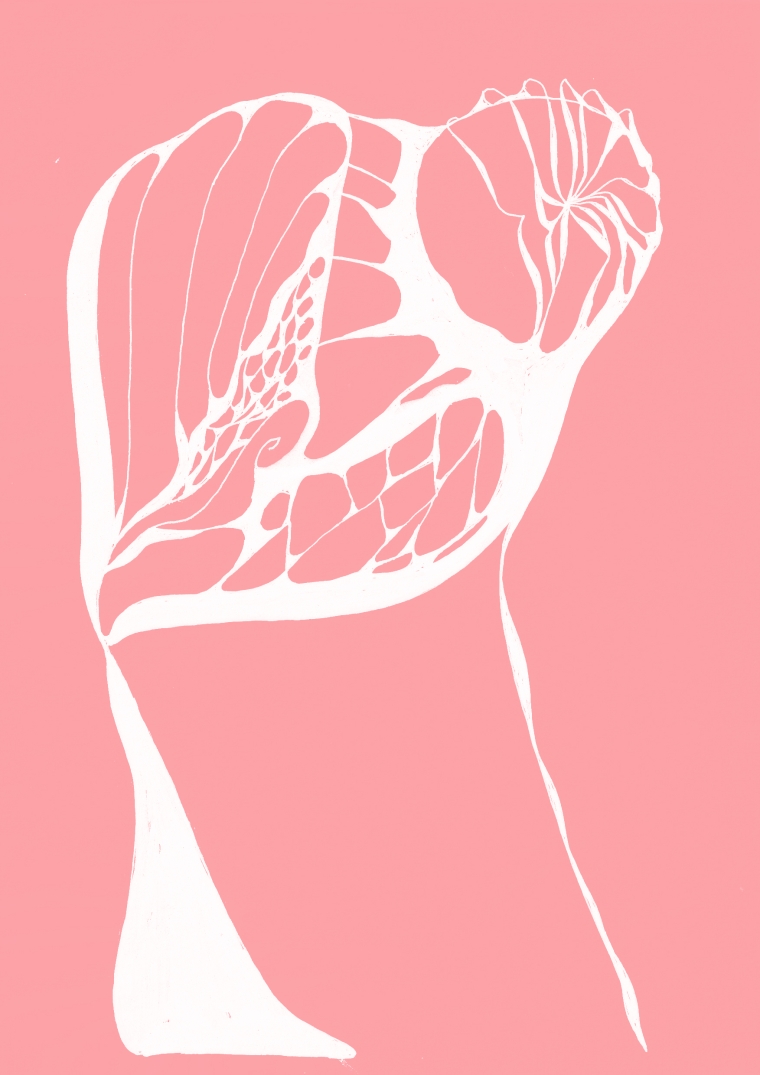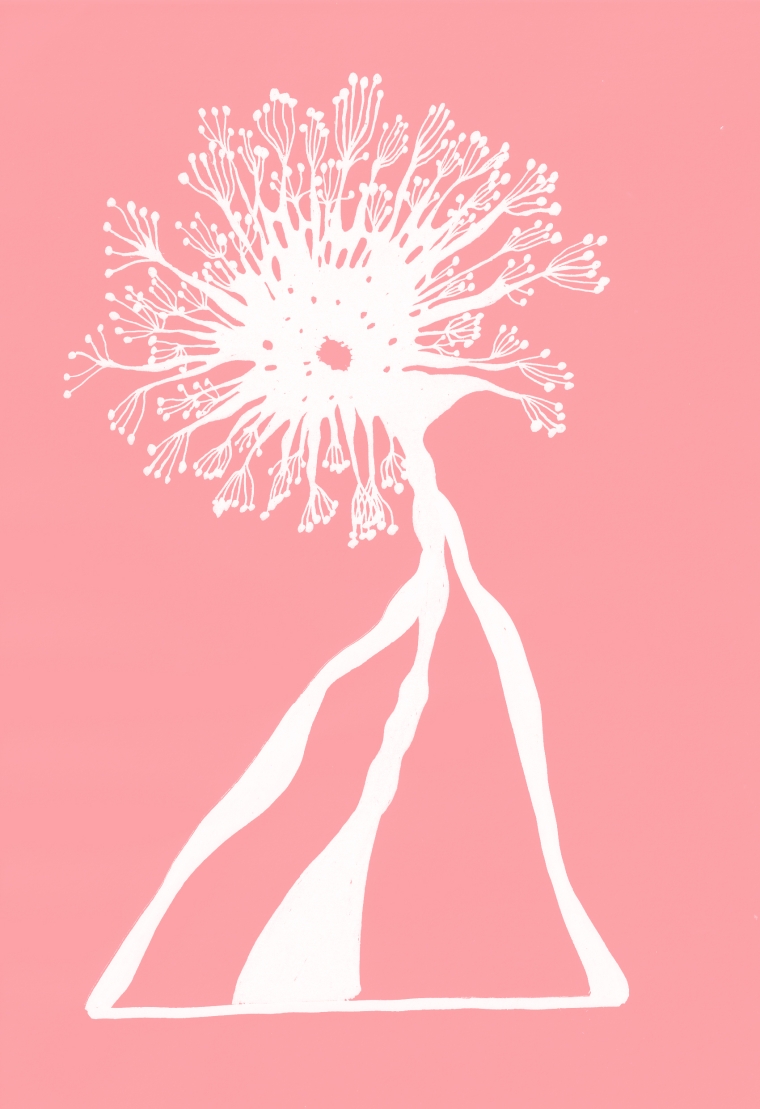The series of conversations “We Care A Lot”, put together by Leonorana magazine for maat extended, arose in dialogue with maat – Museum of Art, Architecture and Technology’s 2023 programme, which adopts mental health as one of its overarching themes. This choice aligns maat with what is now a trend among other cultural institutions, with frameworks being set up that call for mental health issues to be addressed in their full complexity.
The series opens with Susana Caló. We chose her on account of her research background: she completed her doctoral thesis in philosophy on the relationship between language, semiotics and politics in the work of psychoanalyst and activist Félix Guattari; she has written on networks of alternatives to psychiatry; and she is currently undertaking collaborative research with Godofredo Enes Pereira on institutional analysis. We also wanted to begin with Susana Caló because of her thoughtful contributions to the discourse, always situated in contemporary thought and practice, and her political approach and advocacy. We discuss concepts’ genealogies and how one might understand, think, engage and build politically construed alternatives to creating social well-being.
—
Isabel Carvalho
Isabel Carvalho
We agreed we would begin by talking about how we conceive of certain notions. And this leads us to ask ourselves what we mean when we talk about “mental health”. Why, when we mention health in this context, is illness (that is, mental illness) always implicit in our discussion? What are the histories of these concepts? When and how did they come about?
Susana Caló
What we think of as “mental health” is a relatively new concept. Its emergence as a field or discipline dates more or less to the end of the first half of the twentieth century and is associated with the development of public health policy, clinical psychiatry and the founding of the World Health Organisation in the wake of the social hygiene movement. Until that point, a variety of terms were used, including “insanity” or “madness”, “alienation” and “mental hygiene”, among others. It is essential to understand that what was once referred to as “madness” was framed as health and illness, and specifically became an object of the medical sciences and psychiatry. And so, the fact that we think about and relate to our mental experiences today – it could be melancholy, depression, delirium, agitation or anxiety – as kinds of illness is a function of the history of psychiatry. This has important practical and theoretical implications from which practices and institutions were and are organised today.
What we think of as “mental health” is a relatively new concept.
Isabel Carvalho
You said “mental health” has supplanted the concept of “madness” and that, at least in part, this change took place against the backdrop of “treatment” in the interest of some notion of health. These treatments took the medical route – so what we are dealing with is a process of medicalisation. The notion of health as something achieved via the administration of drugs has as its most conspicuous resulted in the normalisation of the medicated person. Nevertheless, when we spoke about these things, I had had it in my mind that the term had arisen as a way of acknowledging that there was no such thing as “the mad” but instead a range of states of suffering (if we may call them that) that anybody, at any time, can go through. As such, I thought the term “mental health” was meant to foster a horizontal approach and constituted a democratisation of the concept of illness that would prevent the societal exclusion, and subsequent institutionalisation, of certain members of society. Now I see that both these ideas may not be incompatible. Far from it in fact.
Susana Caló
I think the issue here is that the process you call the “democratisation” of mental illness, which can lead to improvements in care access and treatment conditions (something fought for by the hygienist movement), has not been accompanied by a democratisation of therapeutic models, nor by a more politicised and collective understanding of mental health. Intervention is still overwhelmingly performed according to the biopsychiatric model and via psycho-pharmaceutical therapy, and is likewise dominated by the worldview of Western medicine. Let us look, for example, at the historical development of the DSM (Diagnostic and Statistical Manual of Mental Disorders, the first version of which was published in 1952), one of the main instruments of diagnostic standardisation worldwide. We see that its evolution is deeply intertwined with the growth of the pharmaceutical industry and biomedicine as the dominant paradigm. Moreover, direct correspondence can be seen between a patient securing a diagnosis and accessing health insurance reimbursements. However, psychiatry should not be confused with this dominant model; many alternative forms exist. And the DSM itself has been sharply criticised by clinicians themselves, as in the case of the British Psychological Association’s response to the output of DSM-5 (published in 2013). They accused the manual of progressively pathologising psychological responses once considered normal, failing to reference the relational and social contexts of illnesses, and over-identifying the causes of mental illness as coming from the individual. The major problem with the medicalisation of what is today called “mental illness” is the way it draws sharp boundaries around a field of supposed expertise, specialisation and professionalisation. This not only cuts mainstream society off from the issues and the discussion around mental health, but it also abstracts it from a fundamental ecology of knowledges, namely the knowledges of the patients themselves and of the families who have lived experience of these illnesses, not only as a physical but as a social phenomenon. It also precludes all non-medical or “popular” knowledges and forms of care. This epistemicide of alternative knowledge systems and practices obviously has a widely documented colonial history. But what it comes down to in all cases is a separation of the issue of mental health and illness from its political context. Not long ago, at a forum on mental health I attended in Paris, a member from the community organisation La Trame asked: “Is it possible to treat someone who doesn’t have a roof over their head?” Such a point, in my view, raises the fundamental questions to take into consideration when thinking about mental health or ill-health.
Isabel Carvalho
Do people today, generally speaking, live life in a constant state of fear of “madness”? Do you think the internalisation of a common threat of “going mad” and the general acceptance of a particular notion of health have created opportunities for the pharmaceutical business?
Susana Caló
You raise an important point. One of my activist friends from the United States explained to me how the pharmaceutical industries have been behind the most prominent campaigns to reduce stigma towards mental health. Now of course this might lead to very positive social and cultural outcomes. Yet it is clearly problematic because of the powerful interests involved in maintaining the monopoly on pharmaceutical drugs. The stigma around mental health must be addressed, but I believe this should be done by recognising that mental health is inherently political. By this, I mean that mental health issues cannot simply be boiled down to biology or genetics. They are rather produced by a network of interactions that, beyond biology, also involve economic, social and cultural factors. With this in mind, I’d like to see campaigns arise that situate mental health in an appropriate political dimension. It draws me back to that question I cited: “Is it possible to cure someone who doesn’t have a roof over their head?” The neoliberal model conceives of treatment as “recovery”. This tends to be synonymous with restoring a certain level of work productivity in the patient. This model also assumes that people suffering from mental illness are responsible for their own “cure”, that is, for taking care of themselves, and that those who find themselves failing do so because they are not looking after themselves properly. This is an economic recovery and optimisation model, not one geared toward welfare or social justice. And besides – what of the right of people to recover independently, in their own time, or even the right not to recover – since “recovery” often simply means behaving in accordance with the economic expectations of capitalism? A society continually preoccupied with productivity, unending growth and the continual manufacture of novelty is a society that is itself sick, and sometimes illness is the healthiest response to such a society.
Isabel Carvalho
I think that brings us naturally to the issue of mental health activism. Could you tell me a bit about how you envision work in this area? And could you tell me a bit about your own involvement in it?
Susana Caló
It was in the wake of the civil rights, feminist and sexual liberation movements that mental health activism first gained momentum in the 1970s. It organised to advocate for the rights of users and survivors of psychiatry, and advocate for mental health care reform.
In England – where my involvement in mental health activism began – there are many collectives and associations of individuals and families with lived experience of psychiatry and psychological distress who organise themselves into peer support groups and work on campaigns against capitalism in the health service. And these groups are essential for drawing attention to the political dimension of health. In the past twenty years, we have seen the rise of “survivor research” or “service user research”, which values first-hand experience as a source of knowledge (the 'user' experience), and demands the right to research of survivors of psychiatry in the universities themselves, and of research centres led by people with lived experience.
My contribution to this body of research has focussed on recovering alternative minor histories of psychiatry and the histories of social and political movements in connection to the notion of madness. I have sought to join these two threads and give a novel account of the relationship between political and social movements on the one hand and the evolution of psychiatry and ideas surrounding madness on the other. In other words, to address the separation of mental health from the field of the social and its knowledges, and the progressive transformation of madness into an object of psychiatry.
But I am not only interested in the history of alternatives but also in those alternatives being developed and proposed today, and so my work is always carried out in dialogue with others. It’s in light of this that I have been part of initiatives to organise international forums where people can share insights, exchange experiences and discuss mental health alternatives (of which there are many, even if they are seldom spoken of).
A society continually preoccupied with productivity, unending growth and the continual manufacture of novelty is a society that is itself sick, and sometimes illness is the healthiest response to such a society.
Isabel Carvalho
You spoke of how women and people of colour – in other words, those who are sexualised and racialised and who suffer social and political discrimination – were in the past more heavily medicated in order to control and subdue any potential for political rebellion. And the history of psychiatry certainly attests to this. I wanted to follow that point by asking, isn’t the link between more vulnerable populations and mental illness just a matter, first of their being exploited, over-worked and, as you say, driven to burnout (both physical and mental) and second, of their precisely being aware that this is what is happening to them?
Susana Caló
Race, but also gender and sexuality, are inscribed in the history and definition of mental illness – think for example of how “hysteria” was once associated with women. In The Protest Psychosis, Jonathan Metzl’s remarkable book on the history of the intersection of race and mental illness, he shows how schizophrenia came to be associated with Blackness during the sixties and seventies in the United States, that is, in the era of the civil rights and mass protest movements. He relates how in 1968, an important year for protest movements, the second edition of the DSM was published, and it added aggression and hostility to the tests for schizophrenia. This led to continually increasing numbers of Black men being diagnosed with schizophrenia (and then being hospitalised as a result). He also delves into how the pharmaceutical industry’s marketing material employed images that portrayed Black men as “violent and non-cooperative” And even before that, schizophrenia had been ascribed to women agitating for their rights. People from minorities affected by various kinds of racism have written about the specific psychological consequences of experiencing racial discrimination. And activists have spoken not just about the positive but also the negative mental health consequences of their activism. These examples are important because they show that psychiatry as a discipline must be made more aware of how it is leveraged for political ends. When we talk about mental health, I think it’s more urgent that we reflect on social justice, poverty, migration, racism and gender instead of referring simply to biology or neurochemistry.
Isabel Carvalho
As you said, a tight grip exists on health as a function of productivity. Those who have burnt out are the most disposable to the system. Can the near-obsession with mental health we observe today be divorced from the micro-management and reallocation of human life-energy, according to which “being healthy” and living a healthy life mean being productive, submitting to exploitation and precarious working conditions and eventually surrendering to going back to work?
Susana Caló
Neo-liberalism does not do well with states of non-production, slowness or modesty. It incites production for production's sake, the optimisation of the self, and constant competitiveness because it lives from the capture of all production, semiotic, mental or material. I know people for whom experiences of “burnout” have functioned as moments of great clarity in their lives wherever they were able to see “burning out” as a healthy response to a toxic situation, one where the body simply says no. It shares something with activist work in allowing what seems to be a completely individual experience to be related to a collective framework.
When we talk about mental health, I think it’s more urgent that we reflect on social justice, poverty, migration, racism and gender instead of referring simply to biology or neurochemistry.
Isabel Carvalho
And might the use of certain drugs, of pharmaceutical drugs that is, be of any help to the system? In what ways does our notion of health and happiness square off some drugs as acceptable and others not?
Susana Caló
The opposition is not to pharmaceutical drugs per se but to the pharmaceutical monopoly that excludes other therapeutic possibilities. Most important of all, I think, is that we defend our right to determine the circumstances of our lives and the ways we receive treatment. Let me mention the Icarus Project, which is a reference point for me. Founded by Sascha Dubrul and Jacks McNamara in the US for and in collaboration with people with experiences of bipolar and manic depression, the Icarus Project is a peer-support network that hosts many discussion groups, with a particular focus on lithium use and dependence (lithium is a drug that can help regulate the extremes of mania and depression). As part of this, the group has published many guides to coming off psychiatric drugs. But the most important element of the Icarus Project is the cultivating of a community and ensuring that each of its members can make a choice about what is best for them, considering not only social and cultural factors but the full complexity of their life experience. This might be any combination of solutions, including but not limited to nutritional supplements, changes in diet and nutrition, exercise, sleep, vitamins, yoga, meditation, and so on. The issue at hand is the monopoly power the biopsychiatric and pharmaceutical models hold compared to other practices and knowledges, and most of all, the way its gaze configures madness wholly and exclusively as a form of illness (and so something in need of a cure) in the biological individual.
Isabel Carvalho
I have to admit that when we first met, I got ahead of myself and began (I was still quite shaken by the news that’s come out) trying to address in a muddled way the series of tragedies, very seldom spoken about, that took place within cultural and art institutions during and immediately following the pandemic. We know that, to some extent, issues with mental health and illness within these institutions can be linked (though not exclusively) to precarious contract arrangements and the exploitative practices that are part and parcel of competitive work environments. In these contexts, I think there is a tendency to exploit the creativity of everyone involved, from artists and curators down to education team workers. Obviously, there are other factors at play, as there would be in any workplace, but the ones I have just mentioned are the most conspicuous. But then, when we were talking, you ended up bringing up something remarkable in something of a more positive and hopeful way: the work you are undertaking in institutional therapy and how such work might help establish better practices within institutions. When it comes down to it, I think this work is precisely the kind that responds to the root causes (like those I just mentioned) leading to mental illness. So is prevention a more efficient strategy than mitigation?
Susana Caló
For quite a few years now, I have been studying institutional psychotherapy as it was first elaborated in France during WWII, first in the Saint Alban hospital by the refugee Catalan psychiatrist Francesc Tosquelles, and after that in the La Borde clinic run by Jean Oury, Félix Guattari and a whole collective of patients and caregivers.
I studied the texts written about La Borde, visited the clinic and met with and interviewed several people who once worked or are still working there or who had been or still are patients in the clinic. I learnt a lot through this experience. This model has always captivated me because it stems from the idea that the institution has to be 'treated' in order to treat patients. But it goes even further than that by refusing to draw any distinction between patient and caregiver. Institutional psychotherapy deals with power relations, roles and status, collective organisation, and the singularities of the individual trough collective institutional creation. In this way, the whole life of the institution, all its spaces and activities, its institutional unconscious, are considered. Language as a medium for transference is replaced with a semiotically and materially expressive whole, a model of transversality. I will use the example of the kitchen space, which was considered an essential part of therapeutic practice in such institutions. The kitchen was meant to be open to everyone, and everyone was free to lend a hand in the preparation of meals; all the work was distributed in a rota system; and there were a range of work groups and an autonomous self-managed patients’ club. Jean Oury conceptualised this as the importance of the environment or the atmosphere. It is a type of work that requires continuous care and permanence. It is a model according to which the treatment may end up taking on a different, sometimes unexpected form on every occasion. It involves a commitment by the institution to work on itself to avoid institutional pathologies of every type.
Isabel Carvalho
You work on and explore alternative forms of “care” for people’s mental health. How could some alternative methods be implemented in arts and culture institutions? Can a caring approach to mental health be made compatible with the functioning of such institutions?
Susana Caló
We must define what we mean by arts institutions. Are we talking about academic institutions, private museums or state-managed organisations? Do we include arts collectives in this category? Each category of institution has its associated problems. I think regardless of whether or not we are talking about arts institutions in particular, it is clear that under the neoliberal economic model, no institution can meaningfully contribute to the collective emancipation of the people inside it. In the research I have been undertaking with Godofredo Enes Pereira on institutional programming and what we term “collective equipment” (a term covering social, cooperative and local facilities), we make a distinction between Institutions with a capital “I”, i.e., corporate and state institutions, and institutions in the lower-case, by which we refer to any other sort of organisation run according to established collective processes. In the latter case, we refer to popular organisations and collectives, cooperatives, or even other configurations that do not acquire representation or incorporation under the law, so any group or collective that has sustained some form of coordinated activity for some period of time. While in the latter case there exists the potential and scope for collective care, in the former, there is not, barring isolated instances in which their members or employees have the power to make decisions about organisational or labour practices (including control over scheduling, salaries, accountability, etc.).
Isabel Carvalho
As I mentioned earlier, as part of this collaboration between maat extended and Leonorana magazine, I mean to highlight community support networks that operate according to horizontal principles. The forced isolation, often in very challenging circumstances, that the pandemic caused has demonstrated the importance of a sense of community belonging. Communities formed online became indispensable. But it was only through speaking to you that I began to think of other ways we might stay connected and maintain social contact, like the radio.
You are a member of the Other Ways to Care, and you put out at least one episode with them on “Radio Care”. Could you talk a little about the project? What effect do you think it had then, and what might it have looking ahead? Have you had any contact with other radio projects? Could you also talk a little bit about your favourite radio stations? What part do audio and voice-driven formats of this kind play in forging alternative mental health support networks?
Susana Caló
The pandemic demonstrated that mutual aid models were, in some cases, able to continue online and that there were even some advantages there in terms of access and inclusivity. On the internet, it is possible to create meeting spaces where each person can control how they participate, with some preferring to speak out loud, with or without a webcam, and others preferring to type in the chat. You can also activate automatic subtitling, and a recording of such meetings can be made for those who want to listen in without being part of the meeting itself. In the first year of Covid, the group I am part of called Other Ways to Care set up an online radio station and broadcast a show as a one-off. It was done in participation with the AntiUniversity festival in London, which we have taken part in since we first got together. That year, I think we had all somehow settled on refusing to engage in any form of productivity, opting instead to do nothing. It was then we had the idea of creating a radio station. We asked our friends, other collectives and anyone who felt so inclined to send us audio files with recordings of anything, speech, readings, music, silence or noise. We compiled all of it into a single file, and on the agreed day and time, we broadcast it online. There was, for me, an immensely powerful sense of community that came from listening to this compilation, each of us separated from the other but united through sound. There’s much to say about radio stations and mental health activism; I have worked with a few of them. Some outstanding examples would Radio Nikosia, based in Barcelona, Radio Fragola in Gorizia and Radio Colifata in Buenos Aires. Whether in the hospital setting, in the community or elsewhere, the radio has the potential to be a vehicle for deconstructing the stigma attached to mental illness. It offers direct, first-person representation. It is a “becoming minor” of media, then harnessed to present personal narratives, that do not receive representation elsewhere. The history of free radio movements, for example, attests to the desire to make radio in a different, autonomous way, to introduce plural voices in dominant regimes of communication. These kinds of radio station are also often spaces for work and creation open to anybody who wants to be involved – Radio Fragola, for example, functions as part of a cooperative. They are powerful and immensely creative places.
Isabel Carvalho
You said you have been working on a map/network of such communities around the world. What have you taken from it so far?
Susana Caló
In the past few years, I have become involved in organising various forums and meetings of collectives and people engaged in advancing and nurturing alternative discourses and practices around the subjects of madness and social care. What I have learnt is that campaigns in mental health must have an intersectional character, and that forging alliances with other struggles both locally and on the global scale is extremely important. When it comes to action, a key part is played by the creation of spaces of permanence and hospitality with a mutualist approach to learning and support. I have also learnt that these sorts of spaces can be existentially challenging, where learning happens through your experience and your exchanges with others. A key step is to source funds to support nomadic pedagogical exchanges between these organisations. I learnt above all that there are so many alternatives. Knowledge production and research must be democratised, and the marginalisation of popular knowledges and popular medicine, if we want to call them that, must be redressed. How we articulate the problem must involve people who have experienced mental illness, their families, and wider society in general – everyone affected. There is much work to be done to heal the rift. Knowledge must be expressed as a function of people, to the end of psychic and epistemic diversity, and it must form part of a counter-hegemonic discourse that paves the way for creating an understanding these problems beyond illness and pathology.
Isabel Carvalho
It’d be great if you could also mention any other projects you are working on or considering.
Susana Caló
I've been working on a book with Godofredo Enes Pereira for six years now and we hope it will be finished very soon. It is a book about the militant action-research cooperative Centre d’Études de Recherche et de Formation Institutionnelle (CERFI) – in English, the Centre for Institutional Study, Research and Development, which was founded at the end of the sixties in France, emerging out of the experience of institutional psychotherapy at La Borde. It developed interventions and programming projects in various local facilities and institutions, including schools, health centres or popular neighbourhoods, practising a form of action-research that paid close attention to group dimensions and the production of subjectivity in militant struggle. It has been a considerable undertaking, based on interviews, translation of primary texts and archival research.
... under the neoliberal economic model, no institution can meaningfully contribute to the collective emancipation of the people inside it.
Drawing: © Clara Batalha / Isabel Carvalho, 2023.
Translation: Vita Dervan.
Leonorana magazine presents “We Care A Lot”, a series of conversations that place mental health at centre stage in understanding contemporary culture. Produced in partnership with maat for maat extended, this special issue of the magazine bears witness, through dialogues in different voices, to experiences of community, mutual care and happy interdependence currently being practised in the fields of art and culture. Recognising the breadth and nuances of contemporary thinking about care, this series – conceived by Isabel Carvalho and boasting the participation of Susana Caló, Nina Paim, Andrea Magalhães, the Pedreira collective and the Kosmicare collective – seeks to shine a spotlight on ways of living and thinking collectively, and allows us to see the ways mental health care practice asks us (and this is a good thing) to exist in relation to other beings, be they human or otherwise.
The name Leonorana comes from Ana Hatherly’s book Um Calculador de Improbabilidades (Quimera, 2001) and the magazine is a tribute to this author. It resumes and updates the central focus of her work, namely concerning the study and experimental practice of the complementarity between verbal and visual languages. Each issue of the annual magazine addresses a different theme, which is defined in dialogue with a guest editor, with whom the editorial methodology and orientation are also outlined. These are proposed to guest authors, who accept to share their interests, processes and accomplished works. The essay is the preferred genre as it is the one that is most adequate to the translation of the thought in formation and that best allows to undertake speculative approaches.


